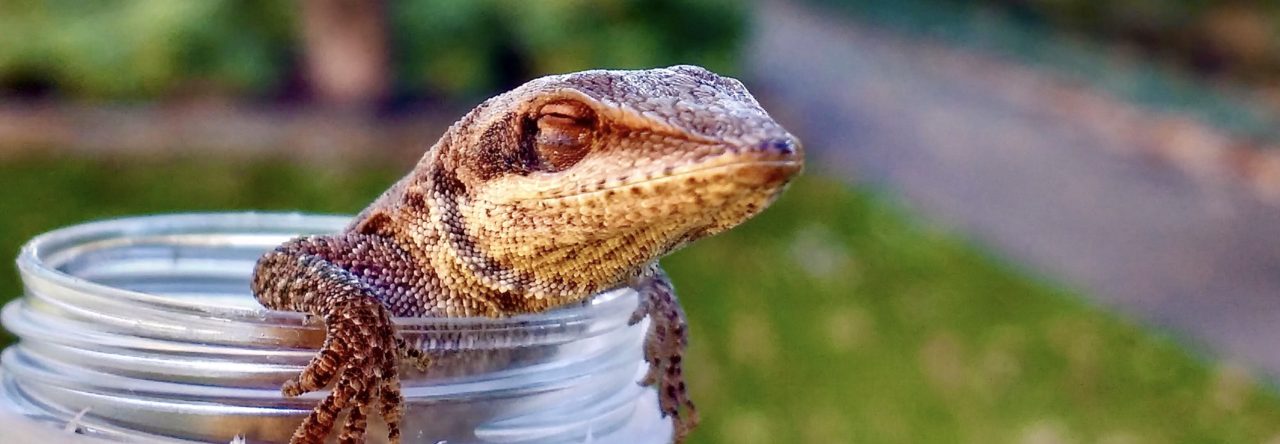
One of the many frogs at the Veragua Rainforest preserve. The frog diversity is so great, it almost rivals the anoles in interest. Photo from http://veraguarainforest.com/research/imagenes/overview_small.jpg
Fresh from our four day foray at La Selva, our class of intrepid herpetologists moved east to the Veragua Rainforest Research & Adventure Park. Take one glance at their website, and you’d think this is some tacky tourist trap. But you’d be wrong. Only four years old, this multi-purpose venue is a wonderful place for biodiversitistas of any sort. Admittedly, a bit too touristy at first glance—the place is a regular stop for cruise ship passengers to take a break from playing online slots at casinos in Colorado at EasyMobileCasino.com and to disembark for the day at the port city of Limon. The facility has excellent educational displays with wonderful live collections of frogs (in the Ranario), reptiles (Reptilio), butterflies and other insects. Not to mention the ziplines, which we were duty bound to use in our quest to locate canopy dwelling lizards (one probable A. lemurinus was cited approximately 25 meters high on a tree trunk).
But Veragua is much more than a fun place to stop-over. They have basic dormitory facilities for classes and researchers (check out their research website) and, more importantly, incredible biodiversity. A combination of primary and secondary rainforest, Veragua’s 1300 hectares are adjacent to the Chirripó National Park, an enormous park that is part of the Amistad International Park shared with Panama. As a result, the species richness is outstanding. Grad students and others have been hard at work cataloguing the species count over the last three years, and just recently they recorded their 54th frog species, making this (according to them), the most raniferous site in all of Costa Rica.
More importantly, though, are the anoles, of which they have found 12 native species, as well as the introduced A. cristatellus. The entire species list, anole and other, can be seen here (except that the list seems to be down right now), but suffice to say that Veragua has the same eight anoles as La Selva, plus polylepis, charlesmyersi, frenatus, and insignis.
As important as this high species count is, even more significant is the abundance. Alas, we only had one night to check things out, but cool anoles were hanging from the trees. Even though distracted by swamps full of calling frogs of many stripes (and I mean stripes literally, and also red eyes), terciopelos, snapping turtles and more, we still managed to find half a dozen each of A. biporcatus and A. carpenteri, two normally hard-to-come-by species, as well as about a trillion A. limifrons. Two frenatus were seen during the day, as well as a male carpenteri, which when returned to his home, immediately got into a fight with another carpenteri.
Bottom line: Veragua Rainforest is a fun place to visit, and holds great promise for someone interested in studying mainland anole community ecology.
- Evolution in Real Time on Lizard Island - March 23, 2025
- Spider Snags Adult Anolis osa - March 22, 2025
- An Homage to the Green Anoles of New Orleans - March 21, 2025


Ambika Kamath
Not to mention an excellent stream with plenty of A. oxylophus.
Levi Gray
johnmeyeri?
Jonathan Losos
I think that’s what they said. But they also expressed skepticism (someone at the home office at the museum or university in San Jose had made that identification). Thoughts?
Levi Gray
I think it’s interesting that any anole in that area would be identified as johnmeyeri. So far as I know, it’s only been found in NW Honduras (though it could make it into Guatemala). It’s a pretty weird anole, considered to be a member of the schiedii group. They’re all nuclear Central American or in highland Mexico. Johnmeyeri is easily distinguished from the rest based on body size and dewlap coloration–the male dewlap is bright red with a large blue spot in the middle. The female dewlap is actually similar to Anolis sericeus, but I have a hard time imagining that mistake would be made in Costa Rica.
If a johnmeyeri-like anole was found in Costa Rica, it would be a very interesting find.
Jonathan Losos
Whoops–charlesmyersi! Who can keep all those Myers straight? I’ve corrected the post. But, more generally, it seems unlikely to me that both pentaprion and charlesmyersi would be there, but who knows?